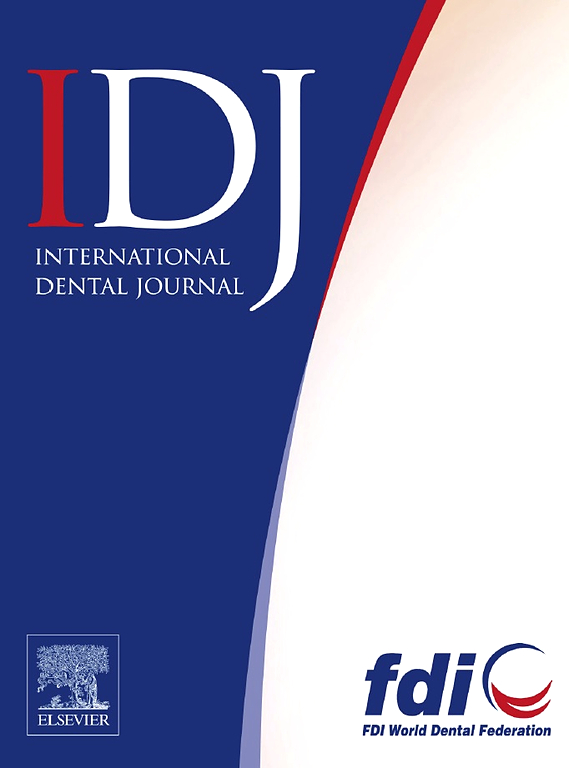Biomechanical Evaluation of Cantilevered 2-Unit Implant-Supported Prostheses: A 3D Finite Element Study
IF 3.2
3区 医学
Q1 DENTISTRY, ORAL SURGERY & MEDICINE
引用次数: 0
Abstract
Objective
To assess the biomechanical performance of cantilevered 2-unit implant-supported prostheses with zirconia and polyetherketoneketone (PEKK) under 3 loading conditions.
Method
A cone beam computer tomography (CBCT) scan of an edentulous mandible was segmented using Mimics software and refined in 3-Matic software to create trabecular and cortical bone structures. Implant CAD files were integrated using SolidWorks software, generating 4 models with varying implant positions: M1 (first premolar implant supporting a second premolar), M2 (second premolar implant supporting a first premolar), M3 (second premolar implant supporting a first molar), and M4 (first molar implant supporting a second premolar). Prostheses were constructed from zirconia or PEKK. Finite element analysis (FEA) in ANSYS software simulated static loading: vertical (100 N) and oblique (30° and 45°, 50 N). von Mises stress and total deformation were analyzed.
Results
Vertical loading showed the highest von Mises stress at cantilever connectors, with M3 displaying the highest cortical bone stress (117 MPa). Zirconia models had slightly higher prosthetic stress, while PEKK models exhibited greater implant and cortical bone stress. Oblique loading caused higher stress in implants and prostheses but remained below yield limits. Maximum deformation was under 25 micrometers for the implant and bone, and 65 micrometers for the prosthesis.
Conclusion
Single implants can support 2-unit cantilevered prostheses when additional implants are unfeasible. The location of the cantilever has minimal impact compared to its size, as a larger cantilevered part increases stress. Zirconia better resists bending forces and reduces implant stress compared to PEKK.
Clinical significance
This study guides prosthodontists in designing 2-unit implant-supported prostheses, emphasizing that multiple implants optimize stress distribution, and that zirconia is preferable for cantilevered designs.
悬臂式2单元种植体支撑假体的生物力学评价:三维有限元研究。
目的:评价氧化锆聚醚酮(PEKK)悬臂式二单元种植体在三种载荷条件下的生物力学性能。方法:使用Mimics软件对无牙下颌骨锥体束计算机断层扫描(CBCT)进行分割,并在3-Matic软件中进行细化,形成骨小梁和骨皮质结构。使用SolidWorks软件集成种植体CAD文件,生成4种不同种植体位置的模型:M1(第一前臼齿种植体支持第二前臼齿),M2(第二前臼齿种植体支持第一前臼齿),M3(第二前臼齿种植体支持第一臼齿)和M4(第一臼齿种植体支持第二前臼齿)。假体由氧化锆或PEKK制成。在ANSYS软件中进行有限元分析(FEA),模拟了垂直(100 N)和倾斜(30°和45°,50 N)的静态加载,分析了von Mises应力和总变形。结果:垂直加载时,悬臂接头处的von Mises应力最大,M3处的骨皮质应力最大,为117 MPa。氧化锆模型具有稍高的假体应力,而PEKK模型具有较大的种植体和皮质骨应力。斜向载荷在种植体和假体中引起较高的应力,但仍低于屈服极限。种植体和骨的最大变形小于25微米,假体的最大变形小于65微米。结论:单种植体可以在不能增加种植体的情况下支持双单元悬臂式种植体。悬臂的位置与其尺寸相比影响最小,因为较大的悬臂部分会增加应力。与PEKK相比,氧化锆能更好地抵抗弯曲力,降低植入物应力。临床意义:本研究指导义齿医师设计2单元种植体支撑的义齿,强调多种植体优化应力分布,氧化锆更适合悬臂式设计。
本文章由计算机程序翻译,如有差异,请以英文原文为准。
求助全文
约1分钟内获得全文
求助全文
来源期刊

International dental journal
医学-牙科与口腔外科
CiteScore
4.80
自引率
6.10%
发文量
159
审稿时长
63 days
期刊介绍:
The International Dental Journal features peer-reviewed, scientific articles relevant to international oral health issues, as well as practical, informative articles aimed at clinicians.
 求助内容:
求助内容: 应助结果提醒方式:
应助结果提醒方式:


